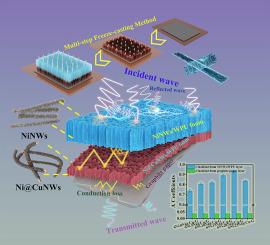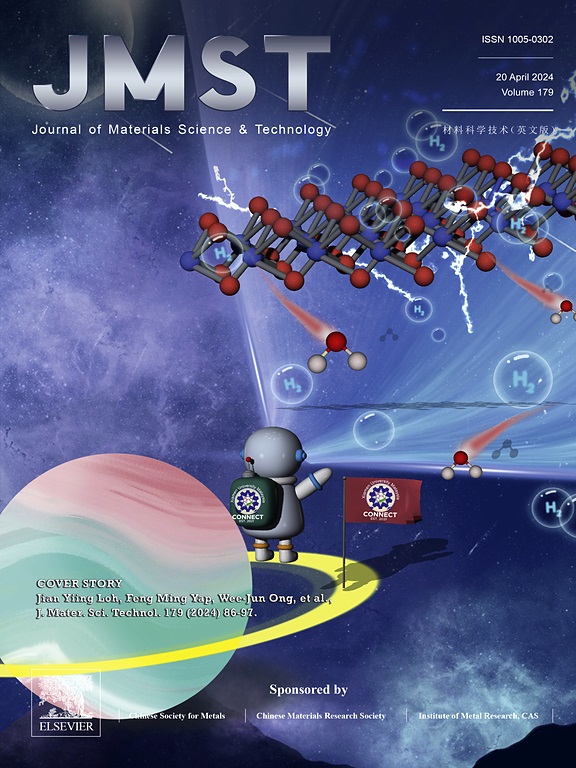Core-shell nickel@copper nanowires associated with multilayered gradient architecture design towards excellent absorption-dominant electromagnetic interference shielding
IF 11.2
1区 材料科学
Q1 MATERIALS SCIENCE, MULTIDISCIPLINARY
引用次数: 0
Abstract
Exploiting high-performance absorption-dominant electromagnetic interference (EMI) shielding composites is urgently desired yet challenging for minimizing secondary electromagnetic radiation pollution. Herein, a nickel (Ni) shell was in-situ grown on a copper nanowires (CuNWs) core to greatly improve the stability of CuNWs, while maintaining excellent electrical conductivity. Afterward, Ni nanowires/Ni@Cu nanowires/graphite paper/waterborne polyurethane (NiNWs/Ni@CuNWs/graphite paper/WPU, nNi-mNi@Cu-G) composite foams with the multilayered gradient architectures were fabricated by a facile multi-step freeze-casting method. In the resultant composite foams, the lowly conductive porous NiNWs/WPU layer plays a role as the impedance matching layer, the moderately conductive porous Ni@CuNWs/WPU layer acts as the transition layer, and the highly conductive graphite paper layer serves as the reflection layer. Arising from the rational layout of multilayered gradient magnetic-electrical networks, nNi-mNi@Cu-G foam holds the superior averaged total EMI shielding effectiveness (EMI SET) of 75.2 dB and optimal absorption coefficient (A) of 0.93 at the incident direction from NiNWs/WPU layer, suggesting the dominant absorption in EMI shielding mechanism and efficiently alleviating the secondary electromagnetic pollution. Furthermore, nNi-mNi@Cu-G foam also exhibits fascinating compressive properties with a compressive strength of 49.3 kPa, which is essential for its practical application. This multilayered gradient architecture design provides valuable insight into high-efficiently constructing absorption-dominant EMI shielding composites.

求助全文
约1分钟内获得全文
求助全文
来源期刊

Journal of Materials Science & Technology
工程技术-材料科学:综合
CiteScore
20.00
自引率
11.00%
发文量
995
审稿时长
13 days
期刊介绍:
Journal of Materials Science & Technology strives to promote global collaboration in the field of materials science and technology. It primarily publishes original research papers, invited review articles, letters, research notes, and summaries of scientific achievements. The journal covers a wide range of materials science and technology topics, including metallic materials, inorganic nonmetallic materials, and composite materials.
 求助内容:
求助内容: 应助结果提醒方式:
应助结果提醒方式:


